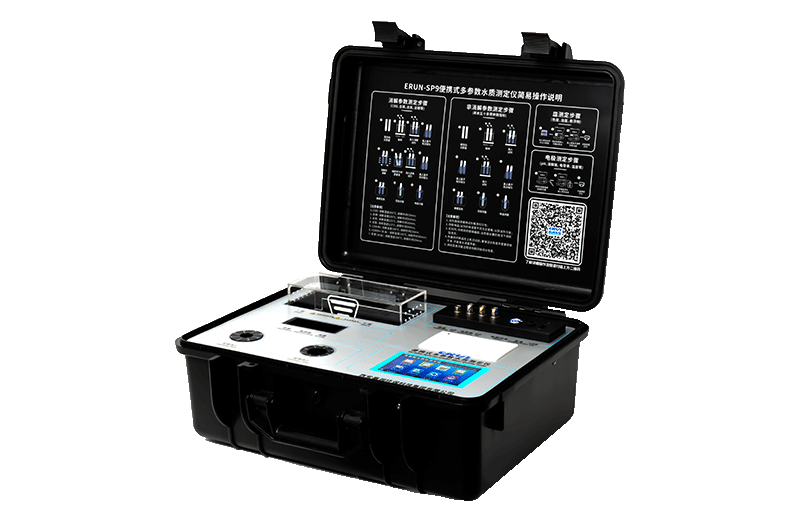Make-up water for hot water networks in thermal power plants and regional boiler houses requires strict testing. Key indicators include pH, hardness, dissolved oxygen, and total alkalinity to prevent corrosion, scaling, and ensure efficient system operation.

This not only impacts daily life but also causes significant economic losses. Thermal power plants and regional boiler houses, as core heat sources for centralized heating, rely heavily on the quality of make-up water in their hot water networks to determine system safety and efficiency. If make-up water contains impurities, it can form scale within the network, reducing heat transfer efficiency and increasing fuel consumption. More seriously, components like dissolved oxygen and chloride ions can accelerate pipe corrosion, leading to leaks. According to the "GB/T 1576-2018 Water Quality for Industrial Boilers" standard, make-up water must undergo strict treatment. Exceeding indicator limits can reduce system efficiency by over 20%. Therefore, regular water quality testing isn't optional; it's a essential requirement for ensuring stable heating and saving energy.
National standards set clear limits for make-up water quality at heat sources. Here are key indicators and their control requirements, primarily referencing "GB/T 1576-2018" and "CJJ 34-2022 Design Code for Urban Heating Networks":
| Testing Indicator | National Standard Requirement | Risks of Exceeding Limits |
|---|---|---|
| pH Value | 8.5~10.0 (for hot water networks) | Low pH accelerates corrosion; high pH may cause caustic corrosion. |
| Total Hardness | ≤0.6 mmol/L (for softened water) | Primary cause of scaling; 1mm scale can increase fuel consumption by 5%~8%. |
| Dissolved Oxygen | ≤0.1 mg/L | Causes pitting and oxidative corrosion, a major reason for pipe perforation. |
| Total Alkalinity | Adjusted based on pH, generally within a set range | Affects buffering capacity; too high promotes scaling, too low accelerates corrosion. |
| Chloride Ion | ≤250 mg/L (referencing CJJ 34) | Damages passive film, aggravates localized corrosion, especially in stainless steel components. |
These indicators are not independent. For instance, pH and total alkalinity need coordinated control to maintain water stability. Hardness and dissolved oxygen directly relate to equipment lifespan – data shows about 40% of heating system failures stem from scaling or corrosion caused by improper water quality.
A large heating company in North China faced a problem: due to excessive hardness in make-up water (reaching 1.2 mmol/L), heat exchanger efficiency dropped by 15% within two years, leading to nearly 500,000 RMB in additional annual coal costs. The diagnosis identified an inappropriate regeneration cycle for their sodium ion exchange softener, resulting in incomplete make-up water treatment.
Solution Implemented:
Introduced daily rapid testing, focusing on hardness and pH.
Utilized portable multi-parameter detectors (like the ERUN-SP7-11 model) for onsite inspections, enabling key indicator screening within 3 minutes.
Adjusted the softener regeneration program and added scale inhibitors.
Results Achieved:
One year later, pipeline corrosion rate decreased by 60%, and maintenance frequency dropped by 40%.
System thermal efficiency recovered to design levels, achieving annual energy cost savings exceeding 300,000 RMB.
This case demonstrates that precise water quality testing and dynamic adjustments are key to achieving both "economic and safety wins."
For thermal power plants and regional boiler houses, while laboratory analysis is precise, portable testing equipment better meets daily inspection and emergency needs. An ideal tool should have:
Multi-parameter Integration: Measures pH, dissolved oxygen, conductivity, etc., simultaneously, improving efficiency.
High Accuracy and Stability: Complies with national standard methods, ensuring reliable data.
Field Applicability: Rugged, waterproof design suitable for complex working conditions.
Ease of Use: Reduces reliance on highly specialized personnel.
Taking the ERUN-SP7-11 Portable Boiler Water Multi-parameter Water Quality Detector as an example, it integrates testing capabilities for 7 parameters, supporting rapid field screening. Its sensors feature an anti-fouling design, making it particularly suitable for analyzing high-alkalinity, high-temperature samples common in heat source make-up water. Many maintenance teams report that using such instruments reduces testing time by approximately 70% and effectively prevents potential failures.
Water quality management shouldn't stop at periodic testing. Establishing a "Test-Analyze-Warn-Handle" closed loop is essential:
Establish Baseline Records: Document seasonal variations in make-up water quality to identify patterns.
Set Warning Thresholds: Intervene proactively when hardness >0.5 mmol/L or dissolved oxygen >0.08 mg/L.
Correlate with Operational Data: Analyze water quality indicators alongside system pressure and temperature data.
Regularly Review Procedures: Annually evaluate the overall water treatment plan according to "GB/T 16811-2018 Operational Effect and Monitoring of Water Treatment Facilities for Industrial Boilers."
Through a systematic strategy, heating utilities can shift from reactive repairs to proactive maintenance, potentially extending pipeline lifespan by over 10 years.

Make-up water quality testing for hot water networks is an indispensable "health check" for the heating industry. By adhering closely to national standards, integrating smart tools, and leveraging practical experience, we can ensure the economical and safe operation of heating systems. Whether for large networks in thermal power plants or local supplies from regional boiler houses, details determine success – starting with a single water sample, we safeguard the quality of every unit of heat.
Note: Data and standards in this article are sourced from publicly available national regulations and industry reports. Tool recommendations are based on common application scenarios; specific selection should consider actual needs.